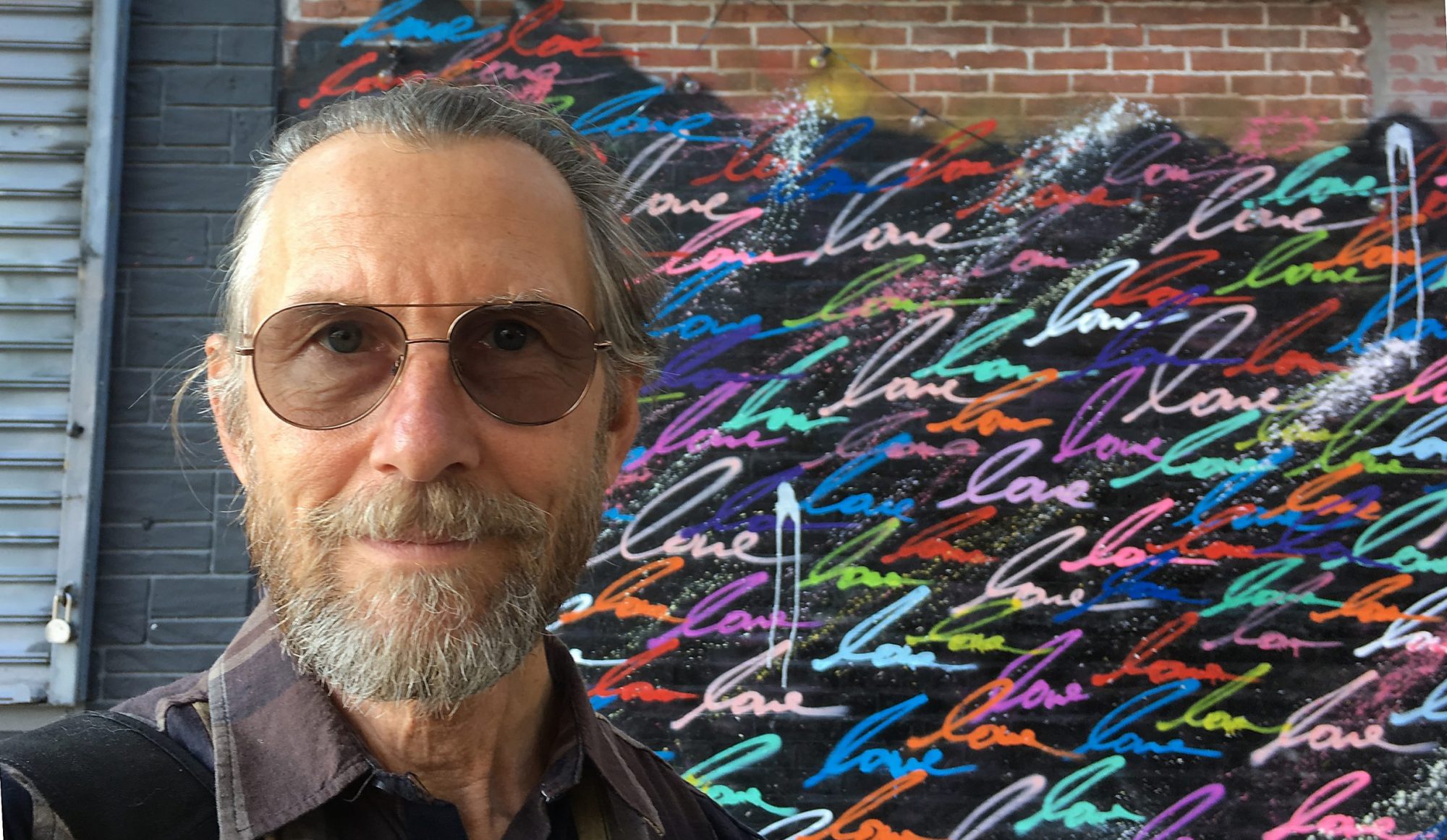Thanks to fabulous artist and good friend Melissa Staiger for this wonderful conversation!
2011
Read an interview, Meet the Teach, on at yogacitynyc.com by Katie Clancy
2005
Read an interview by Cindi Di Marzo below.
| Interview with Be Yoga/Yoga Works Teacher, Peter Ferko
By Cindi Di Marzo May, 2005 Peter Ferko is a familiar presence at Be Yoga/YogaWorks studios, but many students may not know that this popular instructor has practiced yoga for more than 20 years, or that he is a multimedia artist whose work ranges from photography and graphic design to musical composition. I was fortunate to have a chance recently to talk with Peter about his experience as a student, teacher and artist. CDM: Where did you grow up? PF: I grew up in Washington, D.C., and studied liberal arts at Georgetown University. I moved to Los Angeles to play music in 1980 and ended up back in D.C. before moving to New York in 2000. CDM: When did you begin to study and practice yoga? PF: I began studying yoga in 1983 while living in Los Angeles. I read Richard Hittleman [Editor’s note: Richard Hittleman was a popular teacher who founded a studio in 1957 and passed away in 1991. His television series, Yoga for Health, began airing in 1961.], and then began regularly taking classes with Rod Stryker at YogaWorks in Santa Monica. At the same time, I was attending the Self-Realization Fellowship’s Lake Shrine and was initiated in Kriya Yoga meditation. [Editor’s note: The Self-Realization Fellowship was founded in 1920 by Paramhansa Yogananda. For more information, go to www.yogananda-srf.org] During that period, I was also investigating a lot of the “new age” thought that was sweeping through L.A. I was greatly influenced by the Course in Miracles. The Course is about the miraculous intuition, synchronicity and peace that is available through aligning with higher mind/unconditional love/christ consciousness. I’ve found many similarities between the Course and Alan Finger’s teachings about aligning with that higher part of yourself through a regular meditation practice to allow unconditional love and wisdom to flow through your life. [Editor’s note: the Course is a system of spiritual self-study that is said to have been received by research psychologist Dr. Helen Schucman through a process of inner dictation.] CDM: When did you first encounter Alan’s system of ISHTA yoga? PF: Without knowing it, I experienced ISHTA in L.A. at YogaWorks. After leaving L.A. in 1989, I continued to practice yoga and meditation on my own. I explored other styles, but never found a good match with styles such as Iyengar, Sivananda or Ashtanga. I missed the blend of physicality and spirituality, which I now see as the Tantric aspect, that I had found at YogaWorks under Alan Finger’s influence. It was like a homecoming to find Yoga Zone with Alan Finger when I began coming up to explore New York in 1999. I regularly attended classes with Jean Koerner, who remains a mentor for me. I also have had the immense benefit of advanced study with Mark Whitwell, whose passionate devotion to the viniyoga tradition and Tantra have influenced my approach. CDM: At what point did you feel that you wanted to share yoga with others as a teacher? PF: I more or less stumbled into teaching after practicing for two decades. For me, yoga was always a way to make my life work better. After studying with Jean for two years, she suggested that I take Be Yoga’s 500-hour teacher training. I had the rare pleasure of taking the training with my wife, fellow BeYoga/YogaWorks teacher Wendy Newton, in 2002. I began teaching at Be Yoga in November 2003. CDM: Many contemporary students of yoga struggle to balance the demands of full-time careers with sincere and dedicated study. How do you balance the demands of running your own business and producing art with continued study and teaching classes? PF: I’m not sure I’m balancing them. I try to surrender, to make space and to trust that I’m getting the right stuff done. I keep waiting for something else to ask to be let out of my life so I can focus on fewer things, but my passion for all the things I’m doing keeps going strong. I take to heart Alan’s advice that 18 minutes a day in samadhi will provide renewal and answers beyond sleep or overwork. CDM: Your classes are challenging on many levels. Students are guided to keep their movements gentle and in rhythm with their breath; notice how their bodies respond to the movements and be aware of shifts in mental/emotional states. The experience is almost like a symphony, in which many elements come into play and must be carefully orchestrated. Is this the way that you experience yoga in your own practice? PF: Yes, except that sometimes the scale is more like chamber music with just a few players: breath, focus, ego, observation. I am a creaky old man in the morning, so I breathe ujjaii and flow softly through a super- gentle vinyasa before allowing myself to glide into meditation. So, yes, I have to observe the effect on my breath, on my emotions, my energy, my balance of ease and effort, and remember all of the things I say to students when I have a clearer head. CDM: What do you foresee on the horizon for you as a student and teacher? PF: I have been teaching a short intro to Tantra Yoga as part of the Be Yoga teacher training. I hope to offer that this year as a workshop. I think it’s valuable information that students are curious about. Also, I look forward to teaching yoga to more of my close friends; more and more of them are expressing an interest and taking it up on their own. It’s great to watch. |

d808sd
3lhhdy
n5h4gr
heuchz
z2dz7b
s1p1ul
r4d6qc
dxc8ij
zd58yj
n8s4ub
7177jf
gt190y
l3vip4
4fw0if
qfw2u3
jnqx57
jro0wy